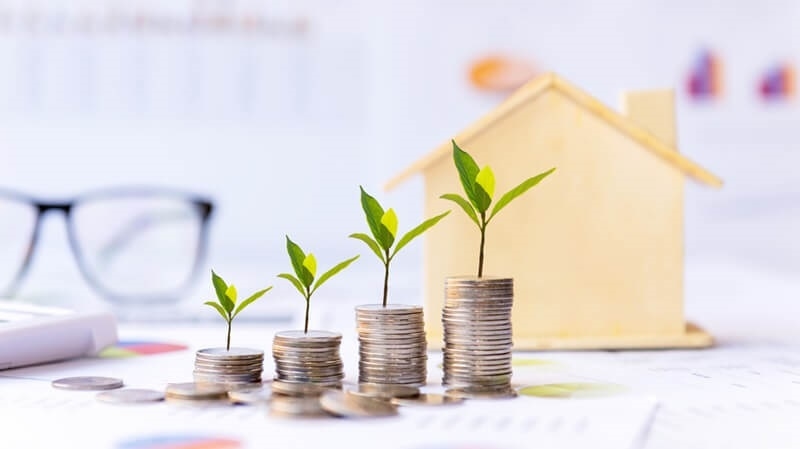
Investing today is not just about chasing returns. People want to know what their money is building and what kind of impact it has. That’s where green investment funds come in. These funds focus on businesses and projects tied to sustainability, from renewable power plants to energy-efficient housing.
Green investing has grown from a niche idea into a mainstream option. Investors now look at both profit and responsibility. For some, green energy investing is the right path. For others, green real estate investing feels safer. Both areas are expanding quickly and are supported by stronger policies and rising demand.
This article looks at green investment funds in real estate and energy, the benefits and risks they bring, and how an investor can use them smartly to balance returns with responsibility.
Green investment funds pool money and direct it into industries that reduce environmental damage. That can mean mutual funds, ETFs, or private funds. These usually target solar, wind, hydro, clean water systems, waste management, or sustainable buildings.
The idea is simple. A green investment should give a financial return and also reduce harm to the environment. You’re not just investing in a company’s growth. You’re supporting businesses that are reshaping energy and real estate for the future.
For years, people thought sustainable funds underperformed. That isn’t true anymore. A large share of green investment funds have matched or even beaten traditional funds. Many ended up in the top performance groups during recent years. This shows that investing in green funds doesn’t mean giving up returns.
Clean energy targets, climate policies, and consumer demand for greener solutions are all creating steady momentum. Whether it’s green energy investing or real estate that cuts down emissions, the opportunities are expanding. These sectors aren’t temporary fads — they’re tied to global goals and long-term demand.
For a lot of investors, green investing feels personal. It lets them back their values while still building wealth. Knowing your money is supporting clean energy or sustainable buildings gives a sense of purpose along with profit.
Explore More: How Equity Investment Can Grow Your Wealth Over Time

Meanwhile, green energy investing focuses primarily on renewable energy such as solar, wind, geothermal, and hydro. It also concerns itself with gravitational storage and hydrogen projects. Funds in this space invest in companies producing equipment, building plants, or running large renewable projects.
Recent years have shown some renewable ETFs posting double-digit returns. While results can be volatile, the sector overall has delivered strong gains. Green investment funds in energy benefit from steady demand, advancing technology, and supportive policy.
The energy sector of green investment enjoys the benefit of steady demand, advances in technology, and favorable policy conditions.
Of course, there are risks.
Diversifying between regions and technologies so that a single policy change or price change does not crush the whole portfolio is the smarter play. That’s how green investing in energy works best.
Real estate is responsible for a big share of carbon emissions. That makes it a natural area for green investment funds. Green real estate investing focuses on properties built or upgraded to be more sustainable. That could be generic things like efficient lighting, solar rooftops, water recycling systems, or low-carbon building materials.
Investors often look for certifications like LEED, WELL, or BREEAM. These confirm that a property meets clear sustainability benchmarks. When investing in green funds tied to real estate, these certifications are often used to measure quality.
Even with strong demand, there are hurdles:
Still, the trend is clear. Businesses and residents are asking for sustainable spaces, and that means green real estate investing will only get stronger.
Must Read: A Simple Guide to Value Investing for Long-Term Stock Growth
Some green investment funds spread money across both sectors. They invest in renewable energy projects and also in developers of sustainable housing or commercial buildings.
This mix offers balance. The growth of green energy investing can be paired with the steady rental income and asset appreciation from real estate. For many investors, this kind of blended exposure is an attractive way of investing in green funds.
If you want to start with green investment funds, here’s a basic approach:
Energy and real estate are both under pressure to move toward net-zero. Governments are pushing, corporations are adapting, while the client is demanding greener solution. Green investing has thus taken a step away from being a mere trend, into more of a necessity.
It feels apt for younger investors to embrace green investment because it is value-oriented. But for large institutions, the approach is really about risk management, since assets that do not consider sustainability could lose value in the future.
The pathway is clear, whether through green energy investing, green real estate investing, or both. The world is leaning towards sustainable finance, and being part of the green fund investment is where the rubber meets the road.
You may also like: Condos vs Small Homes Investment: A Quick Guide for You
Green investment funds let you build wealth while supporting cleaner energy and more sustainable cities. They give access to growing industries without having to pick individual companies or properties. By combining green energy investing with green real estate investing, investors can balance growth with stability. The returns can be competitive, the impact is positive, and the long-term outlook is strong.
This content was created by AI